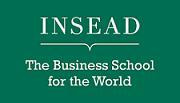
A new Masters of Finance degree program and a new Singapore section of the INSEAD Global executive MBA program are among the developments Peter Zemsky chooses to call out in the interview that follows. Zemsky, a professor of strategy with a focus on competitive strategy, industry evolution, value innovation and action learning, is the acting dean and dean of the degree programs and curriculum at INSEAD. He also teaches the core competitive strategy course in the MBA and eMBA program.
Zemsky doesn’t waste words in his answers to our questions. Read on for his concise, practical tips on how to make your application to INSEAD stand out.
Clear Admit: What’s the single most exciting development, change or event happening at INSEAD this coming year?
Peter Zemsky: We are actually excited by two new developments – the launch of a master degree and an extension of our Executive MBA. Firstly, INSEAD recently announced that it would be offering a Master of Finance aimed at experienced financial industry professionals, on a modular-structure, based on our Asia campus starting in April 2013. Secondly, we have introduced a new section of our Global Executive MBA (GEMBA) this year in Singapore. The Asia GEMBA will consist mainly of a weekend format. For both programs, the structure allows participants to work and study in a rigorous, international environment in parallel, without demanding excessive time away from work.
CA: Walk us through the life of an application in your office from an operational standpoint. What happens between the time an applicant clicks ‘submit’ and the time the committee offers a final decision (e.g. how many “reads” does it get, how long is each “read,” who reads it, does the committee convene to discuss it as a group, etc.).
PZ: Applications are reviewed by round. When an application deadline passes, all the files are checked for completeness (i.e. to be sure they include an online application, two recommendations, GMAT or GRE score, TOEFL or PTE Academic if non-native English speaker, university transcripts, application fee).
The files, in their entirety, are then reviewed by the admissions team. A selection of the candidates to be invited to interview is made. The candidate is then informed that he/she is being invited to interview and is provided with the contact details of the interviewers.
Our interviews are conducted by our alumni, normally in the country of residence of the candidate. We work with 2,000 alumni interviewers around the world – we are fortunate to have a very strong worldwide network of alumni who are very committed and engaged with the school.
After the interviews take place, each interviewer sends the admissions team a report, and then the candidate’s file is reviewed in its entirety, this time with the addition of the interview reports, by two separate members of the admissions team. The file is then presented to the admissions committee, composed of faculty and alumni, who make all final decisions on who is admitted to the program.
CA: How does your team approach the essay portion of the application specifically? What are you looking for as you read the essays? Are there common mistakes that applicants should try to avoid? One key thing they should keep in mind as they sit down to write them?
PZ: From the essays we are looking to get more insight into what makes the candidate tick. We are looking to get a sense of their personality and to understand what makes them different from other candidates. A common mistake is to give a formulaic response that the candidate thinks we want to read – whereas we are looking for authenticity. We greatly value honesty.





